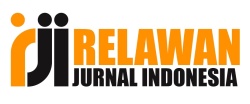Copyright:
- The copyright of each manuscript belongs to the author.
- The author acknowledges that GENIUS: Indonesian Journal of Early Childhood Education is the first publisher under the license of Creative Commons Attribution-ShareAlike 4.0 International License (CC BY-SA 4.0).
- Authors can publish papers separately, arrange non-exclusive distribution of manuscripts that have been published in this journal into other versions by acknowledging that the manuscripts have been published for the first time in GENIUS: Indonesian Journal of Early Childhood Education.
License:
- Attribution: You must provide an appropriate name, include a link to the license, and certify that changes have been made. You can do this in an appropriate manner, but do not imply that the licensor supports you or your use.
- Share Alike: If you compose or make derivatives of these materials, you must distribute your contributions under the same license as the original materials.
- No additional restrictions: You may not use legal provisions or technological means of control that legally restrict others from doing the things this license allows.
You are free to:
- Share, copy, and redistribute this material in any form or format.
- Adapt, modify, and create derivatives of this material for any purpose, including commercial purposes.
- The licensor cannot revoke the above terms as long as you comply with the terms of this license.
Creative Commons Attribution-ShareAlike 4.0 International License (CC BY-SA 4.0).












